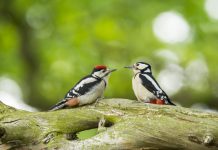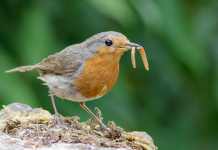While you may pay a lot of attention to the feathered friends that visit your garden, there are many interesting visitors worthy of your attention. This particular spiky guest is a firm favourite in many a household, not only for its adorable appearance, but for the helping hand they give to gardeners across Britain.
But how much exactly do you know about the humble hedgehog? We’ve come up with interesting titbits so you can learn more about them!
1. Do hedgehogs hibernate?
You may already know that hedgehogs need to hibernate in the colder months, but did you know that they don’t just curl up and go to sleep for the winter? Instead, they enter into a state called ‘torpor’. Their heart rate decreases to 20 beats per minute from their usual 190 beats, and they can wake up occasionally to eat and go to the toilet.
A hedgehog needs to weigh at least 500g before they are able to hibernate, so will spend the weeks leading up to hibernation stuffing their faces. They normally hunker down for winter around October or November, until March or April.
2. Are hedgehogs good for the garden?

Image source: Getty images.
If you’re a keen gardener, you should be delighted to see a hedgehog visiting your garden, as they are a wonderful natural pest control. They are keen insectivores, and love to eat invertebrates like beetles, slugs, snails, and earthworms. They have long snouts to help them forage for their food; it’s ahead of their mouths so as to make finding tasty treats like caterpillars even easier!
If you want to leave out a little treat for a hedgehog, they will love to eat any dry cat or dog biscuits, to be washed down with a tray of water. It’s best to remember to offer them a variety of treats rather than stick to one type of food, and to avoid bread and milk.
While most predators are put off by the spikes, the badger is undaunted, and is their main predator in the British countryside.
3. Why are they called hedgehogs?
Our favourite garden mammal hasn’t always been known as the hedgehog. Back in the Elizabethan era, they were known as urchins, which led to the naming of sea urchins. Nowadays, the name hedgehog derives from their habitat and habits. The ‘hedge’ part comes from where they choose to make their homes in the hedgerows, and the ‘hog’ comes from the snorting sounds they make, which sounds similar to a pig or a warthog.
Out in the wild you will only ever see one species in Britain – the Eurasian hedgehog!
4. Do hedgehogs travel in groups?

Image source: Getty images.
A group of hedgehogs is called an array, however you’re unlikely to see one often. They are very solitary animals, and only come together to mate. A male hedgehog can travel up to 3km per night in search of somebody to love!
The hedgehog is strictly nocturnal, so it’s very rare that you would see one in the day. If you do find one out and about in the middle of the day, there’s likely something wrong. Take them to your nearest wildlife hospital to make sure that they get the help they need!
5. Why do hedgehogs have spikes?
The adult hedgehog has around 7,000 spines on average! That’s a lot of spikes! The spines that cover them from head to toe are thick hairs made from keratin, which is the same material that your nails and hair are made of. Each spine has a muscle attached at the base, so that the hedgehog can raise them when they feel threatened. Each quill lasts about a year before it falls out and gets replaced.
Before you go…
By leaving a small hedgehog-sized hole in your fence, they will be able to come into your garden to help polish off those garden pests! If you’ve got a pond, make sure to give unfortunate hedgehogs who might fall in a way to escape.
To give them somewhere to sleep, you can add a hedgehog house to your garden. They also like to make nests in piles of debris, such as leaves, so be careful to check that there’s no spiky visitor tucked up inside before you move these! If you’re making a bonfire in November, make sure to investigate that no hedgehog has made the bonfire pile its home before you light it.




















